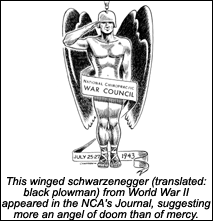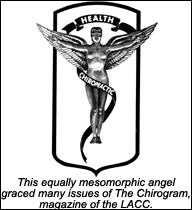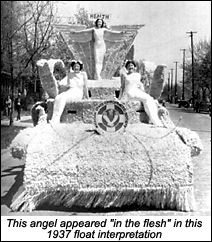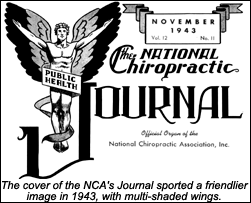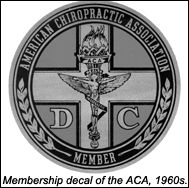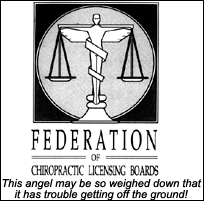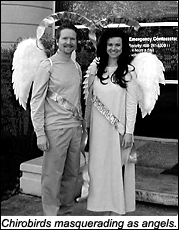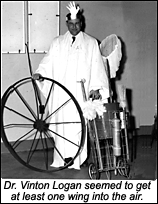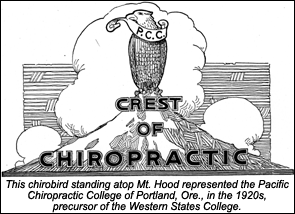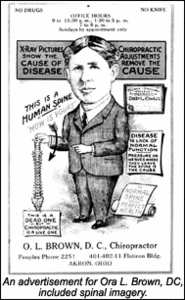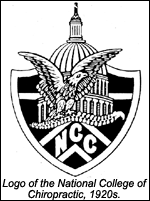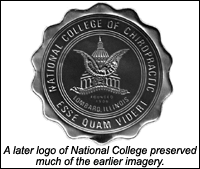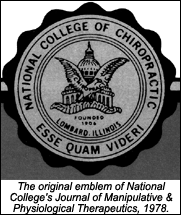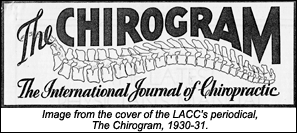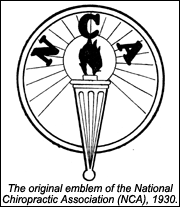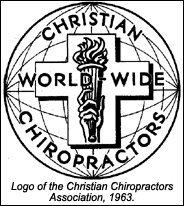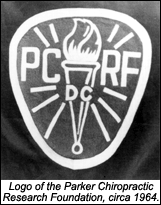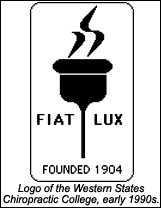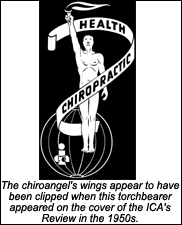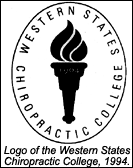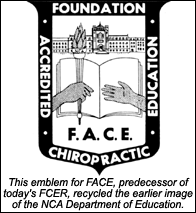A fun place to begin is one of the better-recognized (?) images of the profession: the chiropractic angel (Keating, 1997; Nash & Keating, 1993). The National Chiropractic Association (NCA; forerunner of today's ACA) adopted the angel for its "official emblem" and spoke of it in sublime language:
The Official Emblem
The NCA emblem expresses the highest and noblest ideals of the profession. Conceived by artist M. McDonald of Columbus, Ohio, and perpetuated by Burton Shields Company, this emblem signifies the idea of physical humanity rising to sublime perfection in the white light of chiropractic truth and knowledge. It represents the spirit of chiropractic leading public consciousness upward toward the truths of healing and the attainment of higher physical standards. Its adoption by state societies everywhere is urgently requested in order that the words "chiropractic" and "health" may be uniformly recognized and accepted as synonymous terms by peoples throughout the world. Members of the National Chiropractic Association will be presented with a beautiful reproduction of this official emblem at an early date (Official, 1934).
The angel would undergo many transformations in coming years:
Of course, there are other symbols used to represent chiropractic, the profession and its organizations. The Association for the History of Chiropractic (AHC) relies on good old spinal imagery, which has been something of a standard throughout the "chirocentury."
Torches have also been popular, although some may be mistaken for ice cream cones:
(Part two will continue with logos, beginning with the symbolism of winged hands and lamps.)
References
- Keating JC. The chiropractic angel: research resolves confusion. Dynamic Chiropractic 30 June 1997, pp. 18-9.
- Nash J, Keating JC. The birth of the chiropractic angel. Chiropractic History 1993 Dec;13(2):26-9.
- Official emblem. The Chiropractic Journal (NCA) 1934 Oct;3(10): rear cover.
- Trever W. In the Public Interest. Los Angeles. Scriptures Unlimited, 1972.
Joseph Keating Jr., PhD
Phoenix, Arizona
Click here for previous articles by Joseph Keating Jr., PhD.








